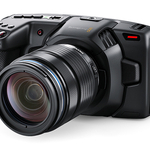So, you are thinking about getting your first drysuit so you can dive all year round? There are some simple things to consider before getting one. All of it revolves around your needs and interests. Good drysuits keep you warm in the coldest of temperatures and will generally give you the ability to control your comfort level. It is not the most technical or complicated equipment, but a drysuit dramatically changes your dives!
There is a reason why taking a drysuit course before donning one is encouraged. For one, if it is made of a neoprene material it radically changes your buoyancy. Make sure you check out the SSI Dry Suit Diving course to make the most out of diving with a drysuit.
Drysuits run anywhere between $1000 and $3000, so consider the following factors wisely.
Drysuits – Things to consider before you buy.
1. What material do you want?
The two most common types of drysuits are membrane suits and neoprene drysuits. Membrane suits are easier for traveling and allow for more layering, while neoprene is warmer and more durable.
Membrane suits:
Membrane drysuits are made using laminated layers to keep you dry. These types of drysuits vary in the type of material and number of layers, but most commonly they are made of stockinette fabric that is further coated with vulcanized rubber. The laminated layers are generally made of nylon and butyl rubber and when put together create a Trilaminate layer.
Because there is no extra buoyancy in the membrane material, there is not the need for extra weights.
Neoprene suits:
Neoprene suits on the other hand are effectively thick wetsuits that have been compressed so that they do not allow any water in. They are heavier than membrane drysuits and provide more insulation. They will require more dive weights too.
Additionally, neoprene drysuits can be more difficult to put on as they are tighter. The flipside of this is that they allow you to be more streamlined when diving.
2. Getting the Right Fitting.
Getting a drysuit that fits comfortably is vital. The first thing you want to do is check that the drysuit does not excessively constrict your neck or wrists. Ensure the seals are good, that they are flush against your skin.
Make sure that the drysuit allows you a full range of movement. Neoprene suits stretch well, but there should still be space for a layer. If you are looking at a membrane suit, you are going to need to have more room to layer your garments.
Comfort is key. You also need to easily reach the valves without any noticeable restriction.
If possible, it is always a good idea to try on the drysuit before buying it because the fitting and comfort may be different when you are in the water. Being a member of a diving club can give you the chance to try drysuit diving and give you the best way to find the right one.
READ MORE: SCUBA GEAR ESSENTIALS FOR NEW DIVERS.
3. Key Features.
Seals:
Every drysuit has seals on the neck and at the wrists. You can get silicone, latex, and neoprene seals depending on your preference.
Silicone is slightly more comfortable than latex, seals very well, and is very UV resistant. On the other hand, latex is more robust against tearing and punctures. Both are easy to get on and can be replaced if damaged.
Neoprene is thicker and the most durable of the three types of seals. But there is a small chance some water can trickle through the neoprene seal, especially at the neck when turning the head.
Boots or Socks:
Drysuits have either integrated neoprene socks or integrated boots with heavy-duty soles like hard rubber. If you decide on boots then you will not need to bring diving boots with you, making them more convenient.
On the other hand, with neoprene socks, you have the flexibility to add any dive boot you want or need.
Valves:
The valves on a drysuit can vary depending on if the suit is made for technical diving or for use with rebreathers. In most cases, drysuits have valves like those on a BCD, with an air inlet valve and an outlet (usually on the upper left chest).
Make sure that the valves are not in a difficult position to reach as it is important to have quick access to them. You will also want to consider the option of having the useful P-valve that allows you to do your business when nature calls.
Zippers and Pockets:
The next thing to consider is the features that you want your drysuit to have. For example, you can either have the zipper on the front, allowing you to unzip yourself when on land, or you can have the zipper on the back giving you less clutter on the front of your suit.
Front zippers make it easier to get into the suit without assistance and for urinating.
Another feature to consider is whether you want any pockets. Pockets on a drysuit can be useful to store small gear but will also make the volume of the suit larger.
Wearing gloves also makes it more difficult to open, but you get used to it.
READ MORE: SURFACE MARKER BUOYS 101 – ALL YOU NEED TO KNOW.
4. Maintaining your drysuit.
Finally, a drysuit requires a little more post-dive care. Rinsing the exterior of the suit and waxing the zippers will extend its life. Latex seals will also do well with some talcum powder.
Try to let the zipper remain straight when the suit is folded up for travel or storage.
Keep Wet, Stay Dry!
Once some divers start drysuit diving, they may never go back to wetsuits. It is the comfort factor in any type of dive, any time of year, that gets them hooked on it. For most others, it means that winter does not spell the end of the season, it just adds variety.
But that only works when they find the right suit, made of the right stuff with the right kind of features.
The post Drysuits 101 – A guide to buying your first drysuit appeared first on Dive SSI.
Read MoreDiving, Special, drysuit, drysuits. Dry Suit DivingDive SSI


